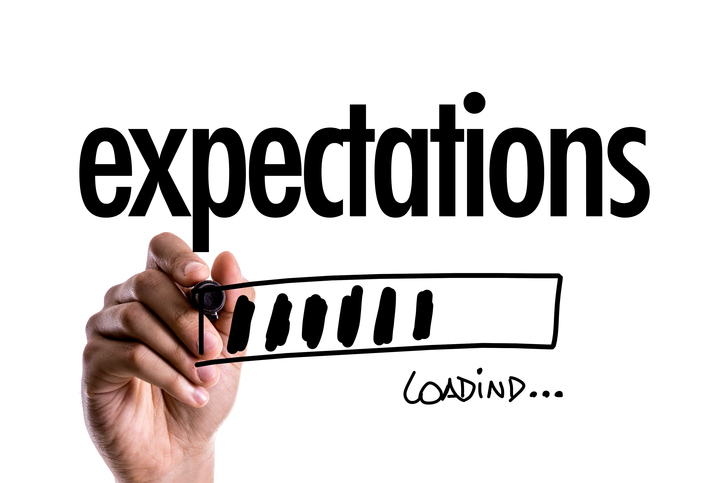
 Over the past few months, I’ve been speaking to clients about staff retention and specifically what strategies they implement to keep top talent.
Over the past few months, I’ve been speaking to clients about staff retention and specifically what strategies they implement to keep top talent.
What I’ve learnt is that there is so much focus, time, effort and money being spent sourcing, selecting and recruiting the right people upfront, but rarely is the same amount of time being spent on keeping new recruits engaged and retained.
I met a new client last month – a consultancy that has a strong focus on getting things right – people, technology and systems. I haven’t seen an organisation with such a fresh approach in a long time. All staff can work remotely at least one day a week, they are committed to achieving work/life balance and they actually want their staff to contribute to the business – regardless of their position. For example, their Finance Manager aspires long term to be in front of clients so she is going on joint visits with some of the Consultants to help her progress in the future. How refreshing! The Director was explaining his recruitment needs and the type of people he was on the look out for over the coming months. I was surprised to learn that every new employee, yes even the administration staff, are assigned an external business coach. This investment is made from day 1 – not when new recruits have proven their commitment, delivered the results or climbed their way to an executive position. The Director explained his belief in ongoing learning and investing in people upfront to increase engagement and long-term retention – and it’s working.
Over the past few weeks, I have made a point of asking to see what other clients are doing in this area and the truth is “not much”. Sadly, once people are hired there is often a sink or swim approach – especially for senior executives who are expected to know what to do, arriving in their new positions with strong experience, expertise and high salaries. What a misconception! These people, sometimes more than anyone need ‘someone to talk to’ – especially in the first 120 days when they are learning the culture, systems and politics, all while trying to impress and make an early impact. Talking to the CEO or Board about concerns, thoughts and feelings is not something new executives feel entirely comfortable doing, not wanting to appear incompetent or a flight risk. It seems having an external party engaged to assist is becoming a popular choice.
A female executive this week told me that she didn’t know if her CEO thought she was doing a good job or not. Even though they do have a good relationship and she enjoys her job, he is very busy and never gives feedback, leaving her development entirely up to her. This approach has both pros and cons. On the plus side, she has been able to spend the money to join an executive networking group to share ideas, discuss problems and gain different perspectives. On the con side, she was head hunted for another executive role within her first 12 months and she actually considered it. She was unsure if she was valued and considered to be a top performer in the eyes of those who matter (see previous blog post on leadership and culture as key retention strategies “How to retain top talent”).
I also learned that one of her managers was struggling with leading a team of people and she instantly engaged an external mentor to assist in his development. She explained that she doesn’t have all the answers, its great for him to have an external ear and truthfully she doesn’t feel she has the time to spend with him.
It tells me that in many organisations there just isn’t the time or internal resources to dedicate to one on one support and development. To pay a professional to just listen or be an external confidante can seem excessive when there isn’t necessarily a quantifiable outcome. I beg to differ, that by investing upfront in new talent it can prevent staff turnover, reduce unnecessary replacement and re-recruitment costs as well as increase engagement levels and ultimately assists in retaining key people.
Don’t leave it too late to invest in people and only take action when there is a performance issue by sending them to a training course or hiring external help. Too often I see companies making rash decisions when someone goes to resign through counter offers of more money, bigger titles, a larger office, better clients, a promotion or increased bonus payments. Why wait until someone is already dis-engaged? Spending time and resources in those first 3 – 6 months, could be the most effective retention strategy you implement.


 This week, a senior HR Manager was telling me about her current job search and about a situation that caught her off guard, unprepared and quite frankly a little cranky. I was surprised, because HR people are generally quite relaxed at interviews –as they are usually the ones on the other side of the table asking the questions. She was called by an organisation after sending in her resume to attend an interview, excited, she asked what she should prepare? “oh nothing, this really is just an ‘eye balling’ exercise” …. The conversation continued in a joking manner “to make sure you have two arms, two legs” etc. My candidate didn’t think too much more about it, as an eye balling surely suggested a quick meet and greet, maybe a coffee, nothing more. You know what happened don’t you? She arrived 15 minutes early and the PA said “oh they are actually ready, you can go on through”. She looked through the door and saw a panel of 3 people – immediately she thought they were just finishing up their meeting and she would be just be meeting with the 1 person like she was told on the phone. No, there were 3 people on the panel with structured interview sheets and questions ready to go. She broke out in a mild panic of sweat and went on to ‘wing it’. At the end she shook hands and left thinking she had blown it completely. She was clearly fired up about it when I spoke to her – how could they do this? How could they be so unclear with candidates about their approach?
This week, a senior HR Manager was telling me about her current job search and about a situation that caught her off guard, unprepared and quite frankly a little cranky. I was surprised, because HR people are generally quite relaxed at interviews –as they are usually the ones on the other side of the table asking the questions. She was called by an organisation after sending in her resume to attend an interview, excited, she asked what she should prepare? “oh nothing, this really is just an ‘eye balling’ exercise” …. The conversation continued in a joking manner “to make sure you have two arms, two legs” etc. My candidate didn’t think too much more about it, as an eye balling surely suggested a quick meet and greet, maybe a coffee, nothing more. You know what happened don’t you? She arrived 15 minutes early and the PA said “oh they are actually ready, you can go on through”. She looked through the door and saw a panel of 3 people – immediately she thought they were just finishing up their meeting and she would be just be meeting with the 1 person like she was told on the phone. No, there were 3 people on the panel with structured interview sheets and questions ready to go. She broke out in a mild panic of sweat and went on to ‘wing it’. At the end she shook hands and left thinking she had blown it completely. She was clearly fired up about it when I spoke to her – how could they do this? How could they be so unclear with candidates about their approach?
 This week I caught up with a friend and old colleague who is incredibility dedicated, loyal, hard working and keen to contribute to an organisation. She is a real gem, a selfless employee who always wants the best for others and is always willing to do what is needed to achieve results. So I was surprised to hear that she is feeling disconnected with her current employer and she is lacking in drive, energy and enthusiasm that she usually exuberates. At a recent strategy meeting one of her efficiency ideas was cut down, she felt a lack of acknowledgement and now feels there is a real mismatch with her personal values and the company values. She is feeling unsupported, demotivated and is now considering a career move.
This week I caught up with a friend and old colleague who is incredibility dedicated, loyal, hard working and keen to contribute to an organisation. She is a real gem, a selfless employee who always wants the best for others and is always willing to do what is needed to achieve results. So I was surprised to hear that she is feeling disconnected with her current employer and she is lacking in drive, energy and enthusiasm that she usually exuberates. At a recent strategy meeting one of her efficiency ideas was cut down, she felt a lack of acknowledgement and now feels there is a real mismatch with her personal values and the company values. She is feeling unsupported, demotivated and is now considering a career move.
 This week one of my top performers was having a downday….she’d lost her mojo, was feeling ‘flat’ and told me she was struggling with motivation. “How do you keep motivated and inspired?” she asked me. As a leader, my stomach sank. There is nothing scarier than a top performer who is feeling worn out…..as Leaders we get scared that if we don’t quickly ‘motivate’ them, they might drop their performance, burn out or dare I say it….leave. The pressure! I wanted to give her an answer, not any answer, a great answer that would make her feel valued, inspired,motivated and happy. But the fact is there isn’t just ‘an answer’.
This week one of my top performers was having a downday….she’d lost her mojo, was feeling ‘flat’ and told me she was struggling with motivation. “How do you keep motivated and inspired?” she asked me. As a leader, my stomach sank. There is nothing scarier than a top performer who is feeling worn out…..as Leaders we get scared that if we don’t quickly ‘motivate’ them, they might drop their performance, burn out or dare I say it….leave. The pressure! I wanted to give her an answer, not any answer, a great answer that would make her feel valued, inspired,motivated and happy. But the fact is there isn’t just ‘an answer’.


 This week I had a new business owner track me down on
This week I had a new business owner track me down on